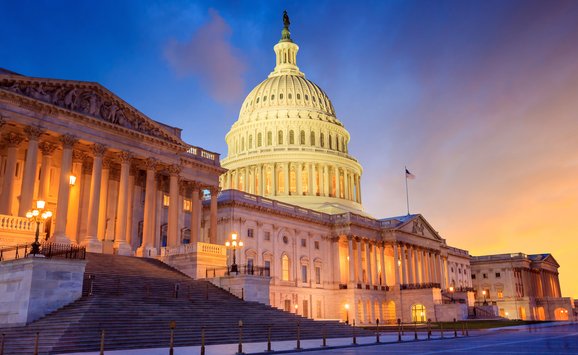Last week, the Trump administration partially rolled back one of the last significant Obama-era climate change regulations: the US Environmental Protection Agency (EPA) rule to reduce methane emissions from oil and gas wells constructed after 2016. The timing of the rule change does seem convenient: it was announced by EPA administrator Andrew Wheeler at an event in Pennsylvania—a state with a notable oil and gas sector, and which serves as a crucial swing state in this year’s presidential election. But with every action comes a reaction: what Trump gains in energizing his base, he will lose in energizing the more than 70 percent of Americans who believe in climate change and the 80 percent who want to see the United States do more (data based on the American Public Opinion on Global Warming survey results from 2018).
In spite of appearances, the oil and gas industry was not united in pushing for this rollback. The major players—not unlike the auto companies that objected to the administration’s rollback of Corporate Average Fuel Economy (CAFE) standards—want to be greener. They see tighter regulations in response to climate change as inevitable; they feel the pressure from the investment community and their shareholders; and they want to be on the right side of history. The pressure for the rollback instead came from smaller players in the fossil fuel sector, who have wanted regulatory relief since oil prices took a dive earlier this year. In the oil business, “small” might still mean a capitalization over $1 billion—but still, these companies have been hurting as the pandemic takes a toll on the global economy.
As it turns out, EPA regulations very often exempt “small” sources from regulations for just this reason. The administration could have installed a simple exemption for these companies and still left the rule intact, making the major players happy, too. Usually, exemptions for small plants or companies are more acceptable than wider-scale rollbacks, since their smallness means their pollution emissions are also likely to be small—more or less proportional to output.
Unfortunately, that is unlikely to be the case here.
The super-emitter problem for methane (e.g., 60 percent of emissions come from 5 percent of the wells) still bedevils scientists who can't nail down what is causing these emissions, nor where the emissions are coming from. But while much is uncertain about the geography of methane emissions, one thing is clear so far: wells owned by small companies are no less likely to be super-emitters than wells owned by the major players. So, a small-company exemption might not have been the best course of action, and perhaps that explains why EPA has taken the unilateral approach.
Is there a better way to satisfy the oil and gas industry while minimizing negative environmental impacts?
Controlling the spread of the pandemic and rebuilding the global economy would raise oil prices (if OPEC permits it) and reduce hardships in the oil patch. But such a recovery doesn't seem likely in the near future. Another option is to promote green (or what the industry terms “responsible”) natural gas and oil markets or trades. The idea is that if buying companies or even consumers value natural gas or oil that has low methane emissions, they should be willing to pay a premium for it. This way, producers would have an incentive to reduce their methane emissions. As we observed in a report I coauthored earlier this year, the government could be involved in creating, funding, or auditing a market for “green” natural gas and oil—and such involvement could be successful even in the absence of a traditional government regulation on methane.
But while some trades have already occurred between, for instance, natural gas developers and natural gas utilities, there's still a long way to go. Still, for this administration and others favoring market solutions, a lot could be done to speed the process, irrespective of what eventually happens to this particular methane rule.






